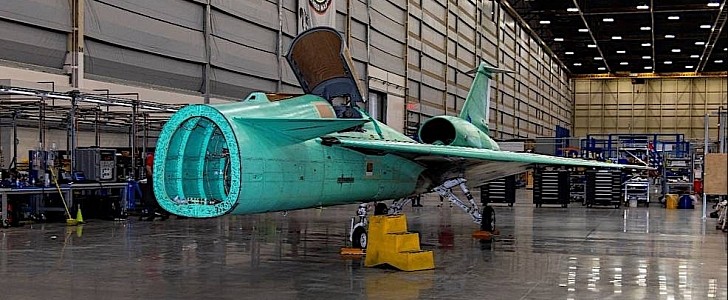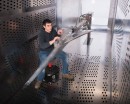Since the beginning of this year, the X-59 Quiet SuperSonic Technology (QueSST) prototype aircraft, NASA’s bid of making supersonic passenger flight a reality once more, and this time over land as well, was on location at the Lockheed Martin facilities in Texas, for testing. As we’ve passed the middle of April, the shell of the airplane made the trip back to California, where it was born, for some more grueling procedures.
While in Texas, what’s ready of the plane was subjected to ground tests meant to validate its “ability to withstand the loads and stresses of supersonic flight,” and the fuel systems were calibrated.
Moved from the Lone Star State to the Lockheed Martin Skunk Works facility in Palmdale, the X-59 is now ready to be at the receiving end of some more ground test procedures, in light of what NASA say is the approaching full completion.
The first actual flight of the thing is expected to take place by the end of the year, followed in 2023 by acoustic validation flights and flybys of populated areas in 2024. In 2027, as per the timetable released by the space agency, the achievements of the X-59 should be ready for review by the “International Civil Aviation Organization and Federal Aviation Administration.”
If successful, the X-59 might open the doors to a new way of designing the airplanes of the future, the ones capable of going supersonic. While that’s something we can easily achieve today, making these planes travel without the sonic boom associated with supersonic flight is what NASA is trying to do with the QueSST.
Shaped in such as way as to separate the shocks and expansions associated with supersonic flight, the plane should be able to be no louder than 60 dB, 30 dB lower than the Concorde.
Presently, supersonic flight over land is prohibited on account of noise generated.
Moved from the Lone Star State to the Lockheed Martin Skunk Works facility in Palmdale, the X-59 is now ready to be at the receiving end of some more ground test procedures, in light of what NASA say is the approaching full completion.
The first actual flight of the thing is expected to take place by the end of the year, followed in 2023 by acoustic validation flights and flybys of populated areas in 2024. In 2027, as per the timetable released by the space agency, the achievements of the X-59 should be ready for review by the “International Civil Aviation Organization and Federal Aviation Administration.”
If successful, the X-59 might open the doors to a new way of designing the airplanes of the future, the ones capable of going supersonic. While that’s something we can easily achieve today, making these planes travel without the sonic boom associated with supersonic flight is what NASA is trying to do with the QueSST.
Shaped in such as way as to separate the shocks and expansions associated with supersonic flight, the plane should be able to be no louder than 60 dB, 30 dB lower than the Concorde.
Presently, supersonic flight over land is prohibited on account of noise generated.






